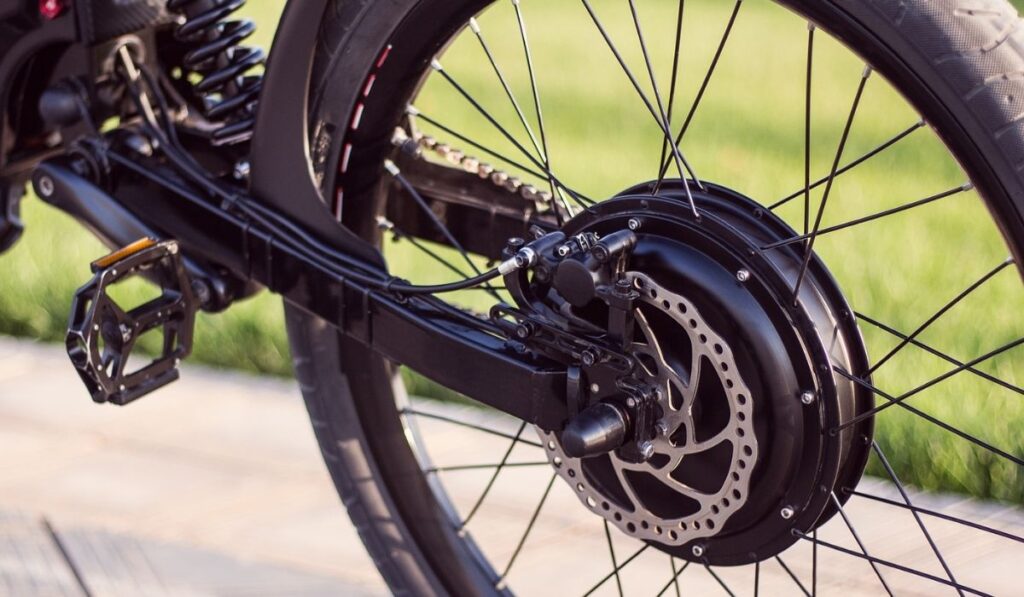E-bikes have come very far in the last few decades. What was once a novelty is quickly becoming a convenient way to add some extra power to your daily commute. Advances in motor technology and battery performance are leading the way on this one. But even so, you can find bikes with all kinds of different motor sizes. So, does motor wattage have a big effect on overall e-bike speed?
Motor wattage does play a significant role in overall e-bike speed and performance. While it’s not the only thing to consider, the motor wattage can give you a good idea of how fast your bike will go. Other factors, such as terrain or weight, should also be noted when considering this.
We all want the best, but when it comes to speed you can have too much. Not only can this be unsafe, but oftentimes it’s downright illegal. So how can you know what speeds to expect from your e-bike? What should you be on the lookout for when trying to judge price, speed, and performance? We’ll dive into those questions and more below, so read on!
How Fast Can an Electric Bike Go?

So you’ve got the need for speed. Can your e-bike satisfy those cravings of feeling the wind blowing in your face and your knuckles turning white? While you might think that motor size and wattage is going to indicate how fast you can go on your e-bike, it’s not quite that simple.
E-bikes can vary in speed. This depends on factors like motor size, wattage, terrain and rider size. Generally, you can expect your e-bike to go upward of 18 mph, but this can vary depending on local regulations regarding e-bike usage and speeds.
When you start thinking about e-bike speed, the sky is really the limit. You can easily find plenty of videos online of how tinkerers modify their e-bikes to go as fast as a motorcycle. Keep in mind that laws and regulations can and often will restrict this kind of power. In most states, and countries, you’ll find restrictions on how fast an e-bike can go, and in turn, the preferred size of the motor.
Most areas will restrict e-bike motor size to around 750 watts or less. This equates to around 1 horsepower. As you can imagine, this means most e-bikes won’t crack 28 mph. Some manufacturers will provide extra juice, but add software limitations like a speed governor that caps the speed at a maximum of 20 mph. E-bikes that exceed this speed restriction certainly exist, but are not considered normal.
In several areas, you’ll find a class system that governs the types of e-bikes that can exist on the market. While this class system is not universal, it gives you a general idea of the kinds of bikes you can purchase and the top speeds that are allowed by law.
The Connection Between Motor Watts and E-Bike Speed
When we talk about speed, the first thing that comes to mind is the motor size. While this can be a good indicator of power, it’s not the only factor that comes into play. Like we touched on earlier, variables like rider size and terrain will also play key roles in how fast your bike will go. But, once you have a general idea of those two factors, you can get a good idea of your bike’s speed capabilities when you consider the motor size in watts.
Secondly, you also need to consider build quality. Just because two bikes share the same size motor does not mean that they will perform exactly the same way. In fact, a 250 watt motor from a respected brand could give you much better performance than a larger motor with a cheaper price point.
Wattage is the main indicator of power for most of us, but it’s often an overstated metric for determining speed and performance. This is because other elements like torque and power distribution are integral to motor performance.
Additionally, the motor is just one element of the entire e-bike system. It needs to work coherently alongside the battery and the controller components to provide power efficiently. If one of these elements is out of whack, it can lead to poor performance.
It’s also worth noting that while a larger motor can provide more power and torque, it will also be larger of course. Larger means it will require more energy, which means you’ll need to source a bigger battery to compensate.
All these heavy components add to the overall weight and remember that the weight of the bike and the rider affects the bike’s speed. So it’s a balancing act to find a powerful enough motor without weighing down the e-bike.
E-Bikes and Motor Speed

To help you on your journey, we’ve compiled a shortlist of common motor sizes and top speeds.
| Motor Size | Top Speed |
|---|---|
| 250w | 20 mph / 32.19kph |
| 500w | 25 mph / 40.23kph |
| 750w | 28mph / 45kph |
| 1000w* | 30 mph / 48.28kph |
As you can see, there are only some slight variations in top speed. At a certain point, you start to see diminishing returns between speed and motor size.
Other Factors to Consider
We’ve already mentioned a few, but since we are touching on motor size, it’s good to revisit the other factors that will inevitably affect top speeds. The first is rider size. As you can imagine, the weight of the rider is going to play a huge role in the speed of any bike. This is where the more robust motors come into play.
Since you don’t see a huge jump in speed when moving from a 250w to a 500w motor, the difference is in the kind of power it can provide even when the rider is larger than average. A 100lbs woman and a 150lbs woman will have different riding experiences if they use the same size e-bike.
Additionally, the terrain is a factor that you should consider when trying to get the most out of your e-bike. If you are dealing with rugged terrain, it’s expected that you won’t be able to hit higher speeds easily. This goes for steep inclines as well. In these situations, the motor has to do double-duty to give you the same power; to deal with those tricky steep grades or rocky roads.
Weather conditions can also play a role in how fast you can travel. While most quality e-bikes will be more than ready for use in the rain, water can easily cause havoc for other parts of your vehicle. It can slicken the wheels, meaning you won’t get as much traction, or it can cause slippage in the drivetrain. This results in less than optimal performance.
You should also consider the wind. If you’re facing a headwind of 10mph, this will cause resistance, and in turn, cause more stress on the motor.
This is all to say that while motor size in wattage can be a good indicator of speed, it’s not the end all be all. You should consider these other factors as well to gain a better perspective on overall bike speed and performance.
Are 300 Watts Enough for an E-Bike?
Yes, in most cases, 300 watts will be enough for your e-bike. For the average rider, a 300w motor can reach speeds of up to 20 mph. Again, this will depend on the rider size and the quality of the e-bike itself.
It’s also worth noting that at this speed, you can find different types of pedal configurations. By this, we mean pedal-assist or throttle. For smaller motors, like a 300w, pedal-assist is a fairly normal option.
Are 750 Watts Enough for an E-Bike?
Absolutely, 750w is more than enough to power an e-bike. This would put the e-bike at the top level when it comes to speed and performance.
While this is certainly the best option for those looking for extra speed, not all areas will allow you to have a bike motor of this size. In some areas, it may even fall into the category of full-blown motorized vehicles and require proper licensing. This is mostly a safety concern, as the higher you get in motor wattage, the faster the bike can go. The faster a bike goes, the more dangerous it can be for the rider.
Are Fast E-Bikes Dangerous?
Okay, so by this point, you have a good idea of e-bike motor speeds and what other factors affect the overall speed and performance of your bike. But, after reading about the higher wattage motors, are e-bikes even safe to begin with?
Generally, e-bikes are very safe. Most areas have restrictions on bikes that exceed speed regulations that are meant to keep riders safe. Always practice proper safety and wear appropriate personal protective equipment like pads and a helmet.
If you happen to be in an area where you can get a higher wattage e-bike, yes, things can get dangerous. But no more so than a small motor scooter. Besides, you are always taking a risk when operating a motorized vehicle of any kind. You have the best chances of staying safe by:
- Always using manufacturer recommendations — This means that you don’t want to modify your bike in any way that goes against what the manufacturers recommends. This can result in better performance but at the cost of safety.
- Following local laws — Areas often have laws regulating e-bikes, not just for motor size but also where they can be ridden safely. Always be aware of these laws before purchasing and operating your e-bike.
- Being wary of retro-fit kits — While thousands of e-bike kits can convert almost any bike into an e-bike, you need to be careful. In most cases, the regular bike just won’t have the components needed to stand up to the strain of a motorized addition.
Wrapping Up
When it comes to e-bike motors, wattage is a huge contributor to overall speed. In most cases, bigger motors will add a few extra mph to your top speed. But keep in mind that motor size is just one factor that determines how fast your e-bike will go. Things like rider size and terrain all play their part in determining the performance and top speed of your bike.
While you can theoretically get your e-bike going as fast as a motorcycle, local laws and regulations could restrict this kind of bike. Always check to see what laws are in your area before making any purchases. Also, make sure you are keeping safe and that you are riding appropriately.
